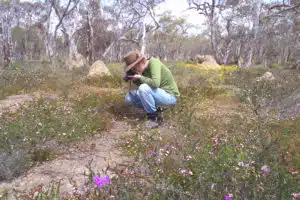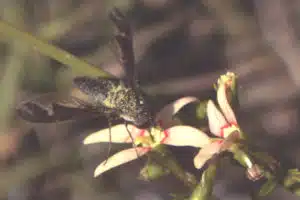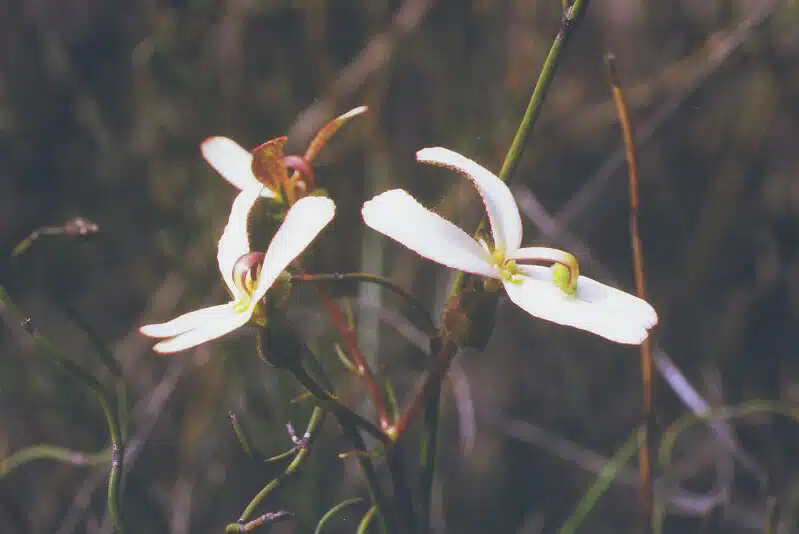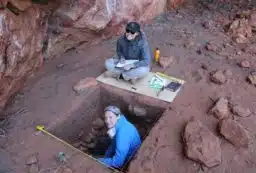A treasure hunt through Western Australia’s south-west has uncovered more than 20 new trigger plant species – small plants that catapult pollen onto visiting insects.
Perth botanist Dr Juliet Wege made her findings whilst researching at the Department of Conservation and Land Management, the study funded by the Australian Biological Resources Study.
Juliet has formally named eight new species and is in the process of naming and describing many more. Her work won her a place in Fresh Science 2004, a national initiative to bring the work of early career researchers to public attention.
Trigger plants (scientifically known as Stylidium) are a diverse group of native herbs that get their name from the ingenious way they use insects to exchange pollen.
‘When an insect visits a flower, a catapult-like trigger flips rapidly through the air and strikes the insect on its body,” explains Juliet. This trigger action is not designed to eat the insect, or to brush it away. It either dusts the insect with pollen, or picks up pollen that the insect is already carrying.
“It’s a delightfully cunning way to transfer pollen between flowers, and the insects don’t seem to mind a bit,” Juliet says. “They visit flower after flower only to be whacked time and time again.”
There are over 230 kinds of trigger plant, making it Australia’s fifth largest species group. The new trigger plants grow in Western Australia’s south-west – the only part of Australia internationally recognised as a biodiversity hotspot.
“The south-west is home to a treasure trove of trigger plants,” says Juliet. “There are over 150 species recorded from this region, but there are plenty more just waiting to be discovered and named.”
These nameless trigger plants are the tip of the iceberg. Scientists estimate that at least 10% of the south-west flora has yet to be discovered.
“Tragically some of our native plants may become extinct before they are even recognised,” says Juliet. “Many south-west species are rare and subject to threats such as land clearing, dieback disease and weed invasion. Species that we are completely unaware of are especially at risk because they are not being actively targeted in conservation programs.”
Many of Juliet’s newly recognised trigger plants are known from only a few populations. Her research has ensured that their conservation requirements can now be addressed.
“Nature-based tourism is based around our spectacular ecosystems,” says Juliet. “Our native plants also contribute to our economy through industries such as horticulture, and potentially through bioprospecting for pharmaceuticals.”
In pursuit of new species, Juliet hunts through bushland found throughout the south-west region. She also examines pressed trigger plant collections housed at the Western Australian Herbarium and other research institutions in Australia and overseas.
She is constantly on the lookout for the rare or unusual.
“It’s a pretty exciting experience to find and name a new species,” says Juliet. “And you don’t necessarily have to drive too far from Perth or a major town to discover one.”
 |
 |
 |
| A collection of trigger plants | New to science – 4 new trigger plants discovered by Juliet | Photographing trigger plants in WA |
 |
 |
|
| A trigger plant after having fired its catapult of pollen |
An insect visitor |





 Fresh Science is on hold for 2022. We will be back in 2023.
Fresh Science is on hold for 2022. We will be back in 2023.